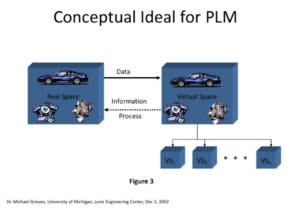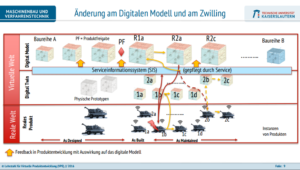Source: DNV GL[/caption]
What is a Digital Twin?
It’s one of those questions that if you ask 3 people, you’ll get 5 answers.
It’s clearly a hot topic. It was on Gartner’s Top 10 Strategic Technology Trends for 2017 and IDC predicts that by 2018 companies who invest in Digital Twin technology will see a 30% improvement in critical processes.
When you get into the way these analysts are actually defining the term and its benefits (even the Wikipedia definition), they’re fairly limited and somewhat unimaginative.
The term Digital Twin was coined back in 2002 by Dr. Michael Grieves while at University of Michigan. He obviously thought about The Digital Twin Concept extensively back then which shows in his definition. Of course the practical application of Internet of Things (IoT) technologies was in its infancy so it's a bit academic.
More recently, Prof. Dr.-Ing. Martin Eigner at Technische Universität Kaiserslautern in Germany has really expanded on the Digital Twin in the context of the IoT, Industry 4.0 and IIoT. His presentation from the PLM Future 2016 conference really does a nice job of explaining the Digital Twin (slide 9) and how it fits into the enterprise architecture.
Effectively, the Digital Twin is an exact virtual representation of a physical thing. It’s as if the physical product or system was looking in a virtual mirror.
Grieves de scribes it as a mirroring (or twinning) of what exists in the real world and what exists in the virtual world. It contains all the informational sets of the physical ‘thing’ meaning its cross-discipline – not just a mechanical / geometric representation, but also including the electronics, wiring, software, firmware, etc. #NOTjustCADmodel
scribes it as a mirroring (or twinning) of what exists in the real world and what exists in the virtual world. It contains all the informational sets of the physical ‘thing’ meaning its cross-discipline – not just a mechanical / geometric representation, but also including the electronics, wiring, software, firmware, etc. #NOTjustCADmodel
And if you believe the recent Forbes article by Bernard Marr What Is Digital Twin Technology - And Why Is It So Important? then, “All indications seem to predict we are on the cusp of a digital twin technology explosion.”
So why is the Digital Twin so Important?
Well, many people talk about Digital Twins in the context of monitoring, simulation and predictive maintenance which are all incredibly valuable and potentially transformative in their own right, however, there would seem to be much more to it.
As products of all types move to include connectivity, sensors and intelligence we can’t just think about the data streaming back from the field.
Without accurate “Context” – Digital Twin – time series data generated during production and ongoing operation is difficult or even impossible to understand and analyze.
In addition, the ability to interpret and act upon these data often require traceability to prior information from related revisions – Digital Thread – we’ll have to talk about that later.
To complicate matters further as artificial intelligence / cognitive computing is introduced the necessity for the Digital Twin becomes even greater. If Knowledge = Information in Context, then without a Digital Twin, machine learning won’t work as intended, will be rendered ineffective or worse... potentially leading to risky misinterpretations or misdirected actions.
Because without Context – Digital Twin – the IoT-enabled value proposition is severely limited and could introduce real liability.
These are just a few of the obvious points we’ve been thinking about at Aras. I’m sure there are a lot more.
What’s your take? Will every product have a Digital Twin in the future? Or is this concept headed for the hype cycle trash heap?

